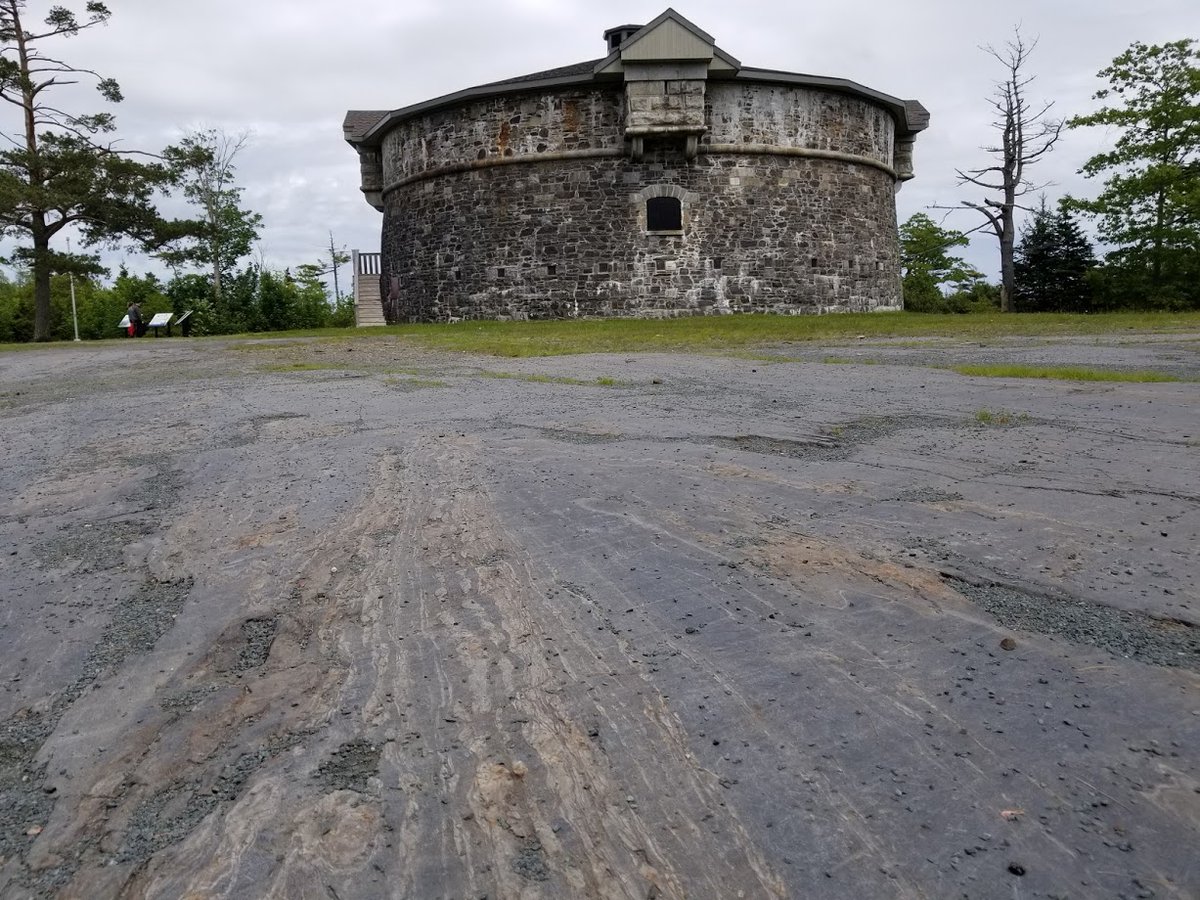We love getting questions about mining, minerals and geology! We were asked about #PointPleasantPark so here are some of our favourite spots in the park that we look forward to visiting when things get back to normal (stay safe in the meantime!).
#nspoli #halifax #novascotia
#nspoli #halifax #novascotia

The Golden Gates at the entrance to #PointPleasantPark are actually iron painted #gold. They were made in 1886 by #Dartmouth's Starr Manufacturing. Starr was best known for its innovative ice skates - even the King of Spain owned a pair. His had real gold plating though!
#nspoli
#nspoli

The Quarry Pond was a quarry in the late 1700s and 1800s, one of over 50 in #PointPleasantPark that helped build its forts, roads and walls. It later filled with water and became the pond we know today.
#nspoli #halifax #novascotia
#nspoli #halifax #novascotia

Small holes were made in the slate with hand-held drills. The holes were filled with explosive to blast the rock and make it possible to collect. Some drill holes can still be found at the pond.
#nspoli #halifax #novascotia #PointPleasantPark

#nspoli #halifax #novascotia #PointPleasantPark


Prince of Wales Tower, aka Martello Tower, was built in 1796-99 of rubble stone (rough unhewn rocks set in mortar). Much of the stone came from the Quarry Pond and the 50+ other quarries in the park. Stone also came from quarries in Purcell’s Cove.
#nspoli #halifax #novascotia

#nspoli #halifax #novascotia


It was the first #Martellotower in the British Empire and a key step toward adoption of a standardized Martello tower design by the British military in 1804. Almost 200 Martello towers were built by the British around their empire for coastal defence.
#nspoli #halifax #novascotia
#nspoli #halifax #novascotia

It was built on the park’s highest point so it overlooked Halifax harbour and it was a key part of the city’s defences. It was one of five Martello towers built in Halifax but is the only one that still stands.
#nspoli #halifax #novascotia #PointPleasantPark
#nspoli #halifax #novascotia #PointPleasantPark

Guns were mounted on the roof and the second storey of the tower, with quarters for up to 200 soldiers. From the 1860s onward the tower was used as a self-defensible depot magazine. The tower’s garrison was never called into action to defend the town and residents.
#nspoli
#nspoli

Pictured below are striations outside #MartelloTower: ruts made a glacier scraping the bedrock. Striations are like tracks - they show us the direction in which a glacier moved.
#nspoli #halifax #novascotia #PointPleasantPark

#nspoli #halifax #novascotia #PointPleasantPark


In 1840, journalist and later-Nova Scotia Premier #JoeHowe criticized Chief Justice Haliburton so his son challenged Howe to a duel at #MartelloTower. Haliburton fired first and missed. Howe fired in the air. Honour was preserved and no one was hurt.
#nspoli #halifax #novascotia
#nspoli #halifax #novascotia

Much of peninsular Halifax’s bedrock, including in Point Pleasant Park, is slate. Sediments deposited as deep-sea muds 500 million years ago were compacted into shale 450 million years ago.
#nspoli #halifax #novascotia #PointPleasantPark
#nspoli #halifax #novascotia #PointPleasantPark

When North America and North Africa collided 400 million years ago as a result of tectonic plate movement, the heat and pressure generated by the collision turned the shale into slate. That’s how slate is formed – it’s metamorphosed (transformed) shale.
#nspoli #halifax
#nspoli #halifax

The #NorthwestArm was formed by glaciers eroding the slate and carving a trough in the bedrock. Slate erodes relatively easily because it is layers of sediment. The layers make it easy for water and frost to get in between and break it apart.
#nspoli #halifax #novascotia
#nspoli #halifax #novascotia

Mountain building – upward pressure from the continents colliding – also fractured the slate along the Arm. After glaciers removed the fractured rock, the trough filled with water after the last ice age as sea levels rose.
#nspoli #halifax #novascotia #PointPleasantPark
#nspoli #halifax #novascotia #PointPleasantPark

(Sea levels are lower during ice ages because so much water is frozen in glaciers).
Alternating layers of mud and sediment – the original sediment from 500 million years ago - can be seen in the picture below at #BlackRockBeach.
#nspoli #halifax #novascotia #PointPleasantPark
Alternating layers of mud and sediment – the original sediment from 500 million years ago - can be seen in the picture below at #BlackRockBeach.
#nspoli #halifax #novascotia #PointPleasantPark

• • •
Missing some Tweet in this thread? You can try to
force a refresh



























